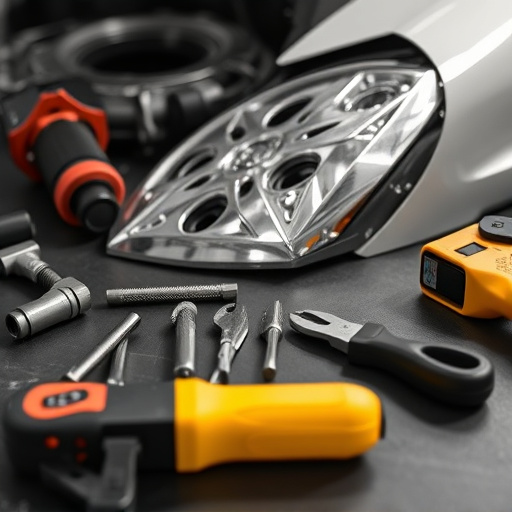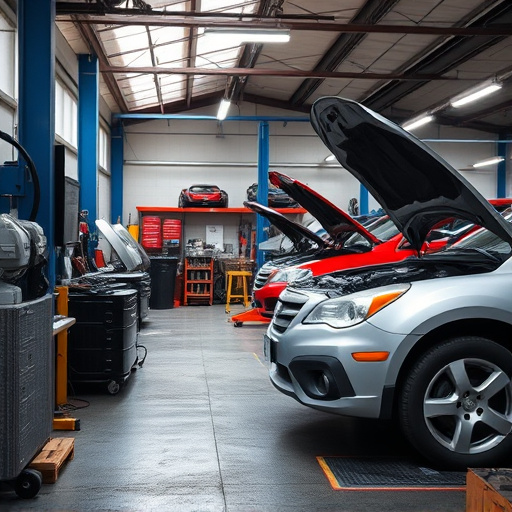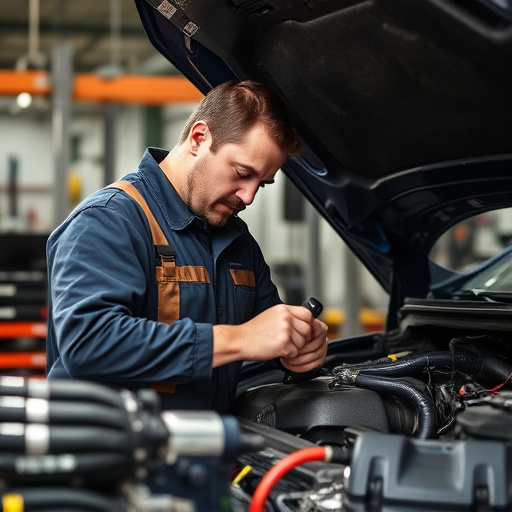Mercedes 360-Camera Alignment: Enhancing Lane Safety and Curb Detection

Mercedes introduces the 360-Camera, an advanced ADAS system offering panoramic views for safer drivi…….
Welcome to an in-depth exploration of a cutting-edge technology transforming various industries: Mercedes 360-camera alignment. This innovative system has emerged as a game-changer, offering unprecedented precision and versatility in visual data capture. In this article, we will unravel the intricacies of this technology, its global impact, and the many sectors it influences. From its technical foundations to future prospects, readers will gain an extensive understanding of Mercedes 360-camera alignment and its role in shaping modern industries.
Definition: Mercedes 360-camera alignment refers to a state-of-the-art imaging technology that employs multiple high-resolution cameras strategically positioned around an object or scene to capture a complete 360-degree view. This technique enables detailed analysis and manipulation of spatial data, offering a holistic perspective previously unattainable with traditional camera systems.
Core Components:
Historical Context: The concept of 360° imaging dates back to the early 20th century, but its practical implementation has evolved significantly. Early attempts involved traditional photography, requiring specialized equipment and manual alignment. With advancements in computer vision and robotics, the technology gained momentum, finding applications in fields like film-making, architecture, and automotive manufacturing. Mercedes 360-camera alignment represents a sophisticated evolution, leveraging modern computing power to achieve unprecedented accuracy and control.
Significance: This technology offers numerous advantages, including:
Mercedes 360-camera alignment has left an indelible mark on industries worldwide, with key trends shaping its adoption and evolution:
| Region | Trends and Influence |
|---|---|
| North America | Early adopters of the technology, the US and Canada have seen widespread use in automotive manufacturing, real estate, and architecture. Startups are pushing boundaries with innovative applications in virtual reality (VR) and augmented reality (AR). |
| Europe | Leading in robotics and computer vision research, European countries contribute to advanced 360° camera systems. Germany, in particular, is known for its automotive industry’s integration of this technology for detailed vehicle inspection. |
| Asia-Pacific | China and Japan are major manufacturers of 360° cameras, driving down costs. This region also witnesses high adoption rates in e-commerce and retail, enhancing product visualization and customer experiences. |
| Emerging Markets | Countries like India and Brazil embrace Mercedes 360-camera alignment for its cost-effectiveness and ability to enhance local industries, from agriculture (crop monitoring) to tourism (virtual tours). |
Market Size and Growth: The global 360° camera market size was valued at USD 4.5 billion in 2021 and is projected to grow at a CAGR of 18% from 2022 to 2030, according to a report by Grand View Research. This growth is primarily driven by the increasing demand for immersive content creation, AR/VR applications, and advanced driver-assistance systems (ADAS) in the automotive industry.
Investment Patterns: Major investments come from tech giants, automotive manufacturers, and startups focusing on AR/VR. For instance, Meta (formerly Facebook) has heavily invested in 360° camera technology for its VR platform, Oculus. Automotive companies like Mercedes-Benz are also at the forefront, integrating this technology into their production processes.
Economic Impact: The adoption of Mercedes 360-camera alignment contributes to:
The Mercedes 360-camera alignment ecosystem is characterized by rapid technological innovations that drive its capabilities and applications:
The development and implementation of Mercedes 360-camera alignment are influenced by various policies and regulations worldwide:
Despite its numerous advantages, Mercedes 360-camera alignment faces challenges that require careful consideration and strategic solutions:
| Challenges | Proposed Solutions |
|---|---|
| High Initial Costs: The setup requires substantial investment in hardware and software. | Leverage economies of scale, offer customizable packages, and explore leasing options to make it more accessible. |
| Data Storage and Processing: Handling large volumes of visual data demands robust infrastructure. | Develop cloud-based solutions with scalable storage and processing capabilities, ensuring data security. |
| Technical Complexity: Accurate alignment requires advanced skills. | Provide comprehensive training programs and user-friendly interfaces to simplify the process for non-technical users. |
| Privacy Concerns: Capturing 360° views raises privacy issues. | Implement robust data protection measures, obtain informed consent, and offer transparent data handling practices. |
Case Study 1: Automotive Manufacturing – Mercedes-Benz
Mercedes-Benz leverages 360° camera alignment for detailed vehicle inspection during production. The system captures every angle of a car, enabling quality control engineers to detect even the smallest defects. This has led to a significant reduction in post-production reworks and improved overall vehicle quality.
Key Takeaways:
Case Study 2: Immersive Real Estate Tours – Zillow (US)
Zillow, a leading real estate marketplace, uses Mercedes 360-camera alignment to create virtual tours of properties. This technology provides potential buyers with an immersive experience, allowing them to explore homes from anywhere in the world. The 360° views also serve as a powerful marketing tool for realtors.
Lessons Learned:
Case Study 3: Agricultural Monitoring – Farmers in India
In rural areas of India, Mercedes 360-camera alignment is used for crop monitoring and disease detection. Cameras placed in fields capture images periodically, allowing farmers to analyze plant health remotely. This technology assists in early disease identification, enabling timely treatment and yield optimization.
Key Insights:
The future of Mercedes 360-camera alignment is brimming with potential, shaped by emerging trends and technological advancements:
Mercedes 360-camera alignment has evolved from a niche technology to a powerful tool that touches countless aspects of modern life. Its global impact is evident across industries, from automotive manufacturing to agriculture, real estate, and entertainment. As technological advancements continue to shape this field, we can expect even more innovative applications, improved efficiency, and enhanced user experiences.
By embracing Mercedes 360-camera alignment and its potential, businesses and industries can stay ahead of the curve, adapt to changing market demands, and create new opportunities for growth and success.
Q: How does Mercedes 360-camera alignment differ from traditional cameras?
A: Traditional cameras capture a single field of view, while 360° cameras use multiple lenses or sensors to record images from all angles simultaneously, creating a complete spherical view.
Q: Can 360° cameras replace human inspectors in certain industries?
A: While 360° cameras greatly assist in inspection processes, they do not entirely replace human experts. They enhance efficiency and accuracy but still require skilled professionals for complex tasks requiring nuanced judgment.
Q: What are the security implications of storing vast amounts of visual data?
A: Data security is a critical concern. Encryption, access controls, and secure cloud infrastructure ensure the protection of visual data from unauthorized access or breaches. Regular audits and updates to security protocols are essential.
Q: Are there any ethical considerations related to 360° camera technology?
A: Yes, privacy is a primary ethical concern. Organizations must obtain consent, be transparent about data use, and ensure compliance with relevant data protection laws to maintain user trust.
Q: How can small businesses afford to implement Mercedes 360-camera alignment technology?
A: Leasing or subscription models make this technology more accessible. Additionally, cloud-based solutions and collaborative platforms enable small businesses to share resources, reducing individual investment costs.

Mercedes introduces the 360-Camera, an advanced ADAS system offering panoramic views for safer drivi…….

Mercedes 360-camera alignment technology enhances vehicle body shop precision and efficiency using a…….

Mercedes 360-camera alignment is critical for modern safety systems, requiring recalibration after m…….

The Mercedes 360-camera alignment system provides a complete 360-degree view around a vehicle using…….

Mercedes 360-camera alignment is vital for advanced driver-assistance systems (ADAS), providing comp…….

The Mercedes 360-camera alignment system offers enhanced safety and performance through a network of…….

Mercedes 360-camera alignment offers drivers a revolutionary safety feature, providing a panoramic v…….

The Mercedes 360-camera alignment technology captures detailed, panoramic views of vehicles using ad…….

The Mercedes 360-camera alignment system leverages four high-res cameras for a comprehensive view, e…….